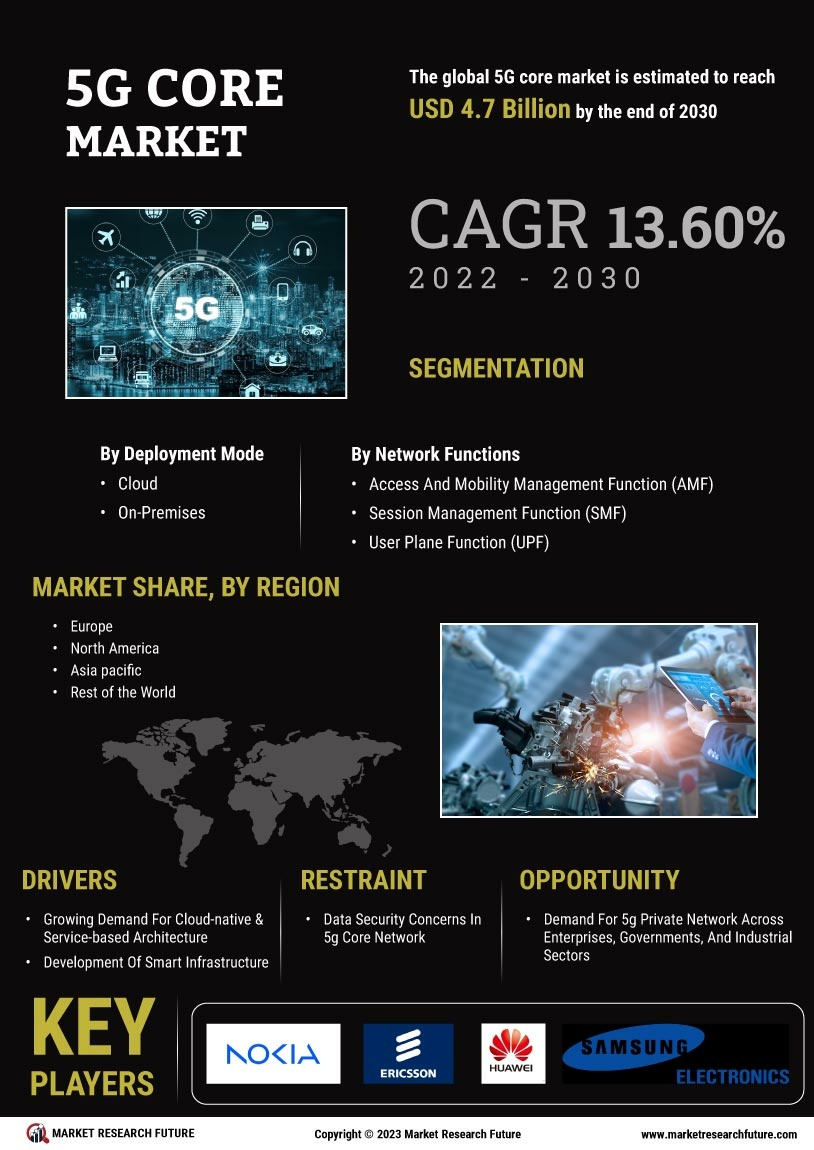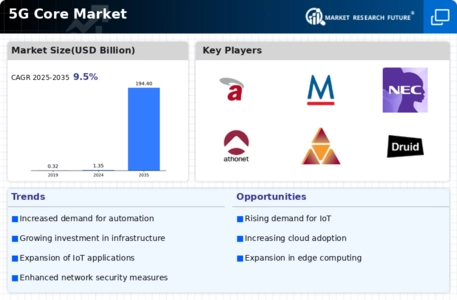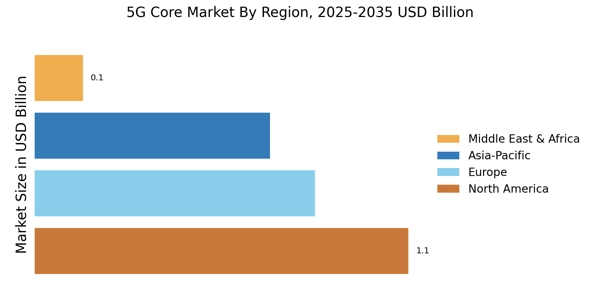The 5G Core Market is currently characterized by intense competition and rapid technological advancements, driven by the increasing demand for high-speed connectivity and the proliferation of IoT devices. Major players such as Ericsson (SE), Nokia (FI), and Huawei (CN) are strategically positioning themselves through innovation and partnerships, thereby shaping the competitive landscape. Ericsson (SE) focuses on enhancing its cloud-native 5G core solutions, while Nokia (FI) emphasizes its commitment to open and interoperable networks. Huawei (CN), on the other hand, leverages its extensive R&D capabilities to maintain a competitive edge in the market, particularly in Asia and emerging economies. Collectively, these strategies indicate a trend towards collaborative ecosystems that prioritize technological integration and customer-centric solutions.
In terms of business tactics, companies are increasingly localizing manufacturing and optimizing supply chains to enhance operational efficiency and reduce costs. The market structure appears moderately fragmented, with several key players exerting influence over various regional markets. This fragmentation allows for niche players to emerge, yet the dominance of established firms like Cisco (US) and Qualcomm (US) remains evident, as they continue to innovate and expand their service offerings.
In August 2025, Ericsson (SE) announced a strategic partnership with a leading cloud service provider to enhance its 5G core offerings. This collaboration aims to integrate advanced cloud capabilities into Ericsson's existing infrastructure, thereby enabling faster deployment of 5G services. The significance of this partnership lies in its potential to streamline operations and improve service delivery, positioning Ericsson favorably in a competitive market.
In September 2025, Nokia (FI) unveiled its latest 5G core network solution, which incorporates AI-driven analytics to optimize network performance. This development is particularly noteworthy as it reflects Nokia's commitment to leveraging artificial intelligence to enhance user experience and operational efficiency. By integrating AI into its core offerings, Nokia is likely to attract a broader customer base seeking advanced technological solutions.
In October 2025, Huawei (CN) launched a new initiative aimed at expanding its 5G core capabilities in Africa, focusing on local partnerships to drive digital transformation. This initiative underscores Huawei's strategy to penetrate emerging markets, where demand for 5G infrastructure is rapidly growing. By fostering local collaborations, Huawei not only enhances its market presence but also contributes to the region's technological advancement.
As of October 2025, the competitive trends in the 5G Core Market are increasingly defined by digitalization, sustainability, and the integration of AI technologies. Strategic alliances are becoming pivotal in shaping the current landscape, as companies recognize the importance of collaboration in driving innovation. Looking ahead, competitive differentiation is expected to evolve, with a pronounced shift from price-based competition to a focus on technological innovation and supply chain reliability. This transition may redefine market dynamics, compelling companies to prioritize R&D and customer-centric solutions to maintain their competitive edge.


















Leave a Comment